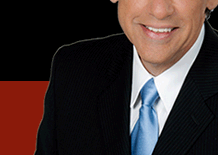|
STANDOUT STAND-UPS
I am often amazed by the vast number of mediocre and bad
stand-ups that have become part of our daily fare of television
news. In most cases, it is clear that the reporter spent considerably
more time on their hair, clothes and make-up than then did
thinking out their story. Here’s the deal: one of the
reasons our business gets such a bum rap, is that many of
us working in news have such overblown egos outsized opinions
of themselves that the value of the underlying news is easy
to miss. Here are some thoughts on really stand-out stand
ups:
1. If your story doesn’t require a stand up to get from
one part of the story to another, don’t do one. Just
making sure your face is on the screen isn’t enough reason
for doing the stand up. The ONLY reason for doing a stand
up is to make a transition from one part of your story to
another not closely related part of the story AND to add additional
information in the visual that can’t be conveyed in the
copy. If you can accomplish the same thing in a simple voice
over, the humble reporter will skip the hair and make-up,
skip the expensive sweaters, and skip the stand-up.
2. This is not to say that I dislike stand-ups. A good stand
up brings life and information to a story that no other technique
can. Most important, if at all possible, find some way to
bring more information to the visual that you are in: a sign,
a building shot, a stream of cars - use the stand-up to further
the story, not to just have it stop on you.
3. If you have to do a stand-up, by all means, move, interact
with your environment and connect with the space you are in.
If you don’t interact with the environment, and simply
stand on the street (any street!), it appears to be a stand-up
for stand-up sake. For example, if you are doing your stand
up in an office, and something important happened at a nearby
desk, touch the desk, point to where the action happened and
move around the desk. Same thing outdoors: if you are covering
a car accident, and the car skidded several yards down the
highway, indicate where the skid marks are, and if possible,
move along them to show where the vehicle came to rest. The
only limitation to doing creative stand-ups is your own imagination.
If you can look at a situation and see how you can both move
through the space and bring additional information to the
story, that is a good justification for a stand up, especially
if the information can’t be easily conveyed any other
way.
Some quick examples: one client of mine did a nifty stand
up with a wireless microphone in a local mall, where she ascended
from one floor below. The VO described all the Christmas decorations
as the camera panned across the front of a number of stores,
and as the camera came to the escalator, our reporter rose
into the shot to complete her stand up. Pretty nifty. Another:
in a story I produced on Microsoft some years ago, the reporter
had to explain that this corner of the Microsoft Campus had
hundreds of employees. The camera followed her down a sidewalk
on the campus, walking against traffic. As she rounded a shallow
corner, the big, brass Microsoft sign slid into the frame.
In one shot we got lots of employees and where they were going.
One more just for fun: In a story on the crazy world of Miami
politics, one student reporter started her stand up very close
to her face, and as she reached the end of her first track
with the words “Que pasa Miami?”, the camera pulled
back to reveal an 20 foot tall oversized sculpture in a corporate
courtyard of a question mark.
4. Don’t ever settle for just standing still in a medium
shot just to get the project done. If your videographer resists
this kind of work (and frankly, I’ve never found one
who has - they generally want to try new interesting stuff),
have a chat and figure out how to get on the same page. In
general, your videographer may in fact be your best source
of ideas for doing stand-out stand ups.
Oh, and of course, keep breathing!
|

















